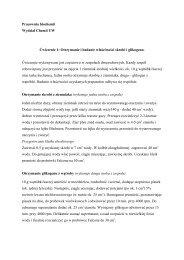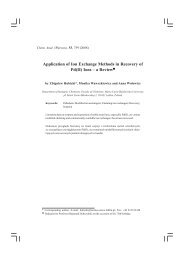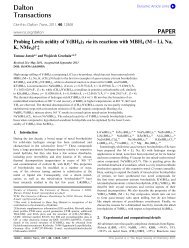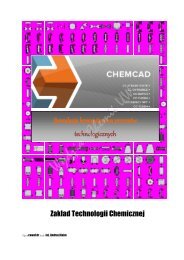Depolymerization of natural and synthetic polymers
Depolymerization of natural and synthetic polymers
Depolymerization of natural and synthetic polymers
Create successful ePaper yourself
Turn your PDF publications into a flip-book with our unique Google optimized e-Paper software.
Most <strong>of</strong> the initiators used in the free-radical polymerization are aliphatic azo<br />
compounds <strong>and</strong> peroxides such as the following:<br />
Methods <strong>of</strong> free-radical polymerization are the following:<br />
1. bulk polymerization – synthesis without solvent<br />
2. solution polymerization – synthesis with (inert) solvent<br />
3. precipitation polymerization – using solvent (such as methanol) to precipitate<br />
out the polymer<br />
4. suspension polymerization – adding an initiator to the suspension in aqueous<br />
solution<br />
5. emulsion polymerization – adding an initiator (such as potassium persulfate) to<br />
the emulsion <strong>of</strong> water insoluble monomers (such as styrene) in aqueous soap<br />
solution.<br />
Ionic polymerization<br />
There are two types <strong>of</strong> ionic polymerization: anionic <strong>and</strong> cationic. The formers<br />
involve carbanons C - <strong>and</strong> the later involves cabonium C + ions. Catalysts <strong>and</strong><br />
cocatalysts are needed in ionic polymerization.<br />
In anionic polymerization as catalysts are used: alkali metals, alkali metal<br />
amides, alkoxides, <strong>and</strong> cyanides. The cocatalysts usually are: organic solvents, such<br />
as heptane. Below the synthesis <strong>of</strong> polystyrene as an example <strong>of</strong> anionic<br />
polymerization is given.<br />
Initiation:<br />
10







